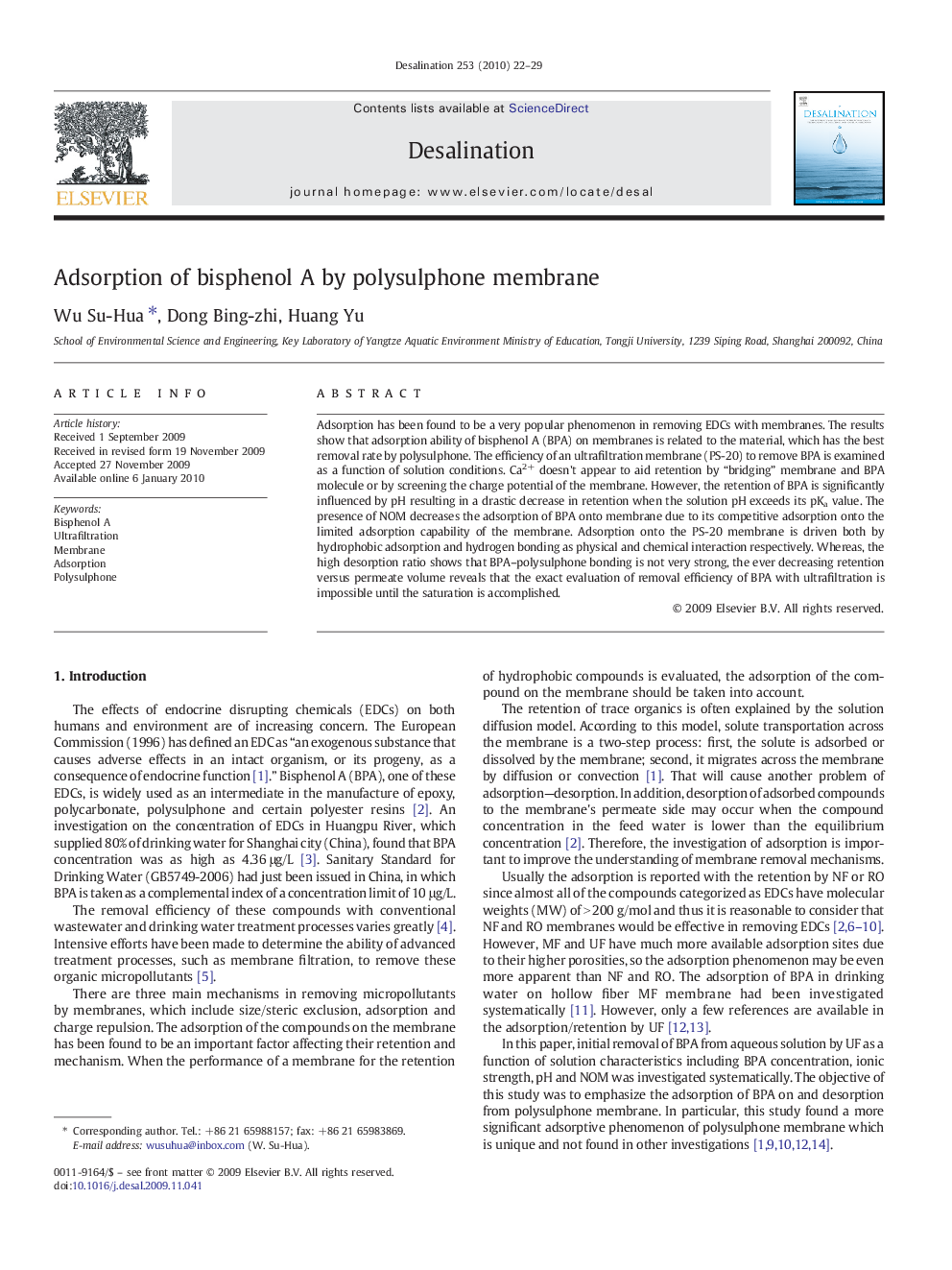| Article ID | Journal | Published Year | Pages | File Type |
|---|---|---|---|---|
| 625820 | Desalination | 2010 | 8 Pages |
Abstract
Adsorption has been found to be a very popular phenomenon in removing EDCs with membranes. The results show that adsorption ability of bisphenol A (BPA) on membranes is related to the material, which has the best removal rate by polysulphone. The efficiency of an ultrafiltration membrane (PS-20) to remove BPA is examined as a function of solution conditions. Ca2+ doesn't appear to aid retention by “bridging” membrane and BPA molecule or by screening the charge potential of the membrane. However, the retention of BPA is significantly influenced by pH resulting in a drastic decrease in retention when the solution pH exceeds its pKa value. The presence of NOM decreases the adsorption of BPA onto membrane due to its competitive adsorption onto the limited adsorption capability of the membrane. Adsorption onto the PS-20 membrane is driven both by hydrophobic adsorption and hydrogen bonding as physical and chemical interaction respectively. Whereas, the high desorption ratio shows that BPA-polysulphone bonding is not very strong, the ever decreasing retention versus permeate volume reveals that the exact evaluation of removal efficiency of BPA with ultrafiltration is impossible until the saturation is accomplished.
Related Topics
Physical Sciences and Engineering
Chemical Engineering
Filtration and Separation
Authors
Wu Su-Hua, Dong Bing-zhi, Huang Yu,
